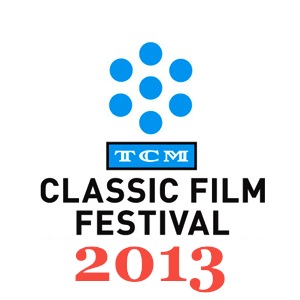
Two weekends ago, I braved rainy San Francisco weather and a quickly dying cell phone to attend Noir City 17’s presentation of À Bout de souffle, also known by its English title as Breathless. Jean-Luc Godard’s masterpiece of New Wave cinema, it is widely credited as having invented the very movement itself. I have long been a fan of this film, and hold a deep respect for the innovations in style, both cinematic and fashion, that Godard has brought about.
I hesitate to call myself a francophile, as I feel that term cheapens the connections I have to France. But I do have deep connections there, both in my heritage and in my personal life. I used to live in Paris, and Backlots was born there. Several branches of my family tree ended up in France and I seem to have endless French cousins (one of those cousins is the operatic soprano Madeleine Grey, a fact that I used whenever I wanted to impress my professors in Paris!) I teach the language and hold near native fluency in it. I try to go back to France every year, as possible.
As such, I’ve always felt quite a connection to Jean Seberg, the American-turned-French actress who stars in Breathless and straddled the line between the two sides of the Atlantic. Despite her excellent French, she never lost her strong American accent, belying her Marshalltown, Iowa roots. That accent endears me to her just as much as her often androgynous fashion. Short hair, capris, striped shirts–combining American casual with French chic–that’s Jean Seberg. Her life was often filled with sadness, and her rocky existence and tragic end merit their own blog post. But her unique image speaks to me as an American who often operates in French spaces, and I’ve always had an intrinsic fascination with her as an actress and a person.
Breathless is a film that the French might call bouleversant, a movie that turned French cinema on its head and changed it forever. It is at once influenced by the style and nuances of American cinema and French cinema of the past decade. While in certain sections the dialogue is reminiscent of the previous year’s thoughtful and pensive Hiroshima mon amour, Breathless also very much belongs on a Noir City program–the story of Michel, a French gangster on the run and his American girlfriend struggling with her attraction to him, her own legal interests, and her own morality. This cinematic duality was intentional on the part of director Jean-Luc Godard, who had longed to make a film himself while writing for the publication Cahiers du Cinéma in Paris.
The story itself was based on a newspaper article that François Truffaut had read about the real-life criminal Michel Portail and his American girlfriend Beverly Lynette. Truffaut and Claude Chabrol collaborated on an early versions of the story, and gave Godard their treatment, acting as advisors on the film and using their clout to help push the movie to distributors with the unknown Godard as the director. Godard, while writing for Cahiers du Cinéma, had come to the conclusion that American directors were the only the ones who really understood how to make important and interesting films, and the French could learn from the way they used the camera and the scenery. Hence, he shot Breathless in a noir style, and the final film really may be considered an American noir set in Paris, in French, with a French director.

Jean-Luc Godard, director of Breathless.
Eddie Muller discussed these nuances before the film at the Castro, and finished by asking the audience to raise their hand if they’ve never seen the movie before. I was at once surprised and excited to see how many in the audience raised their hands–at least 3/4 of the audience was watching Breathless for the first time. Seeing a movie on the big screen with an audience watching it for the first time is an inexplicably joyful experience for a movie fan, and during the film, I was not disappointed. The audience seemed to be collectively holding its breath throughout the whole movie, as the pursuit of Michel unraveled and the film came to its inevitably dramatic and somewhat eerie conclusion.
Noir City is a carefully curated and lovingly crafted San Francisco gem. We are lucky to have it every year at the Castro, and the passion of Eddie Muller is palpable throughout the entire program. I’m happy to be able to attend every year and I thank Eddie Muller, the Noir City staff, and the Castro Theatre for putting on such a magnificent presentation year after year.
The program is traveling around the country, and here are the upcoming dates and cities:
NOIR CITY Seattle: Feb 15-21, 2019
NOIR CITY Hollywood: Mar 29-Apr 7, 2019
NOIR CITY Austin: May 17-19, 2019
NOIR CITY Boston: June 7-9, 2019
NOIR CITY Chicago: Sep 6-12, 2019
Thanks for reading, and be sure to attend Noir City in one of the upcoming cities if you’re nearby!



























_03.jpg)


Hi Lara – the link laragfowler.com didn’t work on my iPad in Safari.
And I loved this film in the 60s and loved this article. Miss you and appreciate where you’ve brought this blog. Loads of love, Marty (Freedman)